A dependent voltage source is a special type of voltage source whose output depends on another voltage or current in the circuit. Unlike an ideal independent voltage source, a dependent voltage source does not maintain a constant output; instead, it varies linearly with the controlling voltage or current.
It is also known as a controlled voltage source and is widely used in amplifiers, transformers, and feedback circuits.
What is a Dependent Voltage Source?
The dependent voltage source is a four-terminal device where the output voltage is controlled either by:
- A circuit voltage (Voltage-Controlled)
- A circuit current (Current-Controlled)
The output increases or decreases linearly with the input, making it highly useful for controlled electronic systems.
Symbol of Dependent Voltage Source
The symbol of the dependent voltage source is given below.
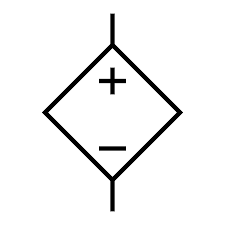
Unlike an ideal voltage source, whose output remains constant regardless of circuit current, a dependent voltage source’s output depends on the magnitude of the controlling voltage or current.
Types of Dependent Voltage Source
Dependent voltage sources are classified into two main types:
1. Voltage-Controlled Voltage Source (VCVS)
A VCVS produces an output voltage proportional to a voltage elsewhere in the circuit.
- Output equation:

Where μ is the dependency factor or scaling factor (dimensionless).
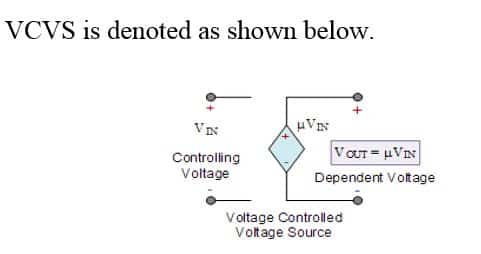
The diagram of dependent Voltage-Controlled Voltage Source (VCVS) is,
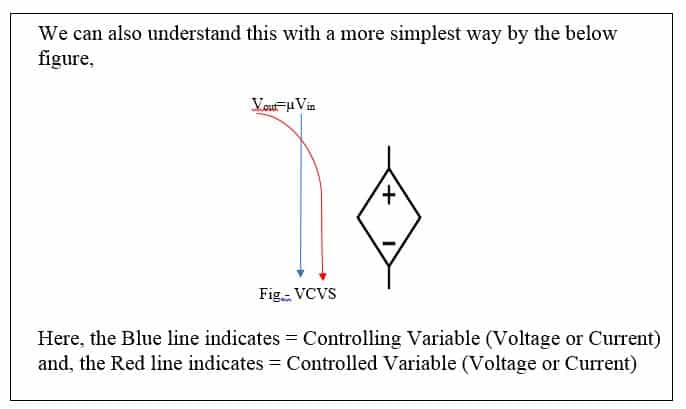
Example: An Ideal Transformer as VCVS
The dependency factor μ is a dimensionless quantity. A classic example of a voltage-controlled voltage source (VCVS) is an ideal transformer.
- In an ideal transformer, the secondary voltage V2 increases or decreases linearly with changes in the primary voltage V1.
- This linear relationship exists because no voltage drop occurs in an ideal transformer.
- The magnitude of V2 depends on the voltage transformation ratio(K), which acts as the dependency factor μ: Thus, V2=K⋅V1

Thus, the secondary voltage is a direct function of the primary voltage, demonstrating a perfect example of a dependent voltage source.
2. Current-Controlled Voltage Source (CCVS)
A CCVS produces an output voltage that depends on a current elsewhere in the circuit.
- Output equation:

Where ρ is the dependency constant measured in Ohms (Ω).
- The output voltage varies linearly with the controlling current Ii.
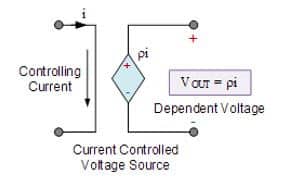
The diagram of Current-Controlled Voltage Source (CCVS) is,
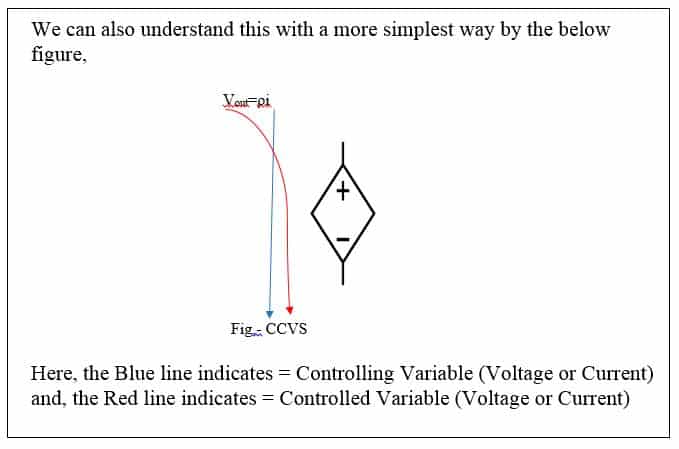
Example of Current Controlled Voltage Source (CCVS)
A practical example of a Current Controlled Voltage Source (CCVS) is an operational amplifier (Op-Amp) used in a transconductance configuration.
In this setup, the output voltage depends on the input current — meaning the input current Iin directly controls the magnitude of the output voltage. CCVS circuits are widely used in analog electronics, particularly in current-to-voltage converter circuits and analog multiplier circuits operating in current mode.
Highlights of Dependent Voltage Sources
- Output voltage depends on input voltage or current
- Linear relationship with controlling signal
- Key parameter: dependency factor (μ) for VCVS and dependency constant (ρ) for CCVS
- Commonly used in amplifiers, transformers, and feedback circuits
Difference Between Dependent and Independent Voltage Sources
| Parameter | Independent Voltage Source | Dependent Voltage Source |
| Output Nature | Constant and fixed, independent of circuit variables | Varies according to another voltage or current in the circuit |
| Control Parameter | None | Controlled by voltage or current |
| Symbol | Circle with polarity signs (+, −) | Diamond-shaped with polarity signs (+, −) |
| Output Equation | V = Vs (constant) | V = μVin or V = ρIin |
| Linearity | Non-linear or constant | Linear relationship with controlling signal |
| Example | Battery, DC power supply | Operational amplifier, ideal transformer |
| Applications | Power sources, supply circuits | Amplifiers, feedback systems, analog modeling |
Applications of Dependent Voltage Sources
These voltage sources are widely used in practical electronic circuits such as amplifiers, oscillators, and sensors.
- Operational Amplifiers (Op-Amps): They use both voltage and current-controlled sources internally for amplification.
- Transistor Models: BJTs and MOSFETs can be represented using dependent sources to simulate their input–output characteristics.
- Feedback Systems: Dependent sources allow proportional control in automatic gain and voltage regulation systems.
- Analog Signal Processing: Used in analog multipliers, differential amplifiers, and current-to-voltage converters.
Advantages of Using Dependent Sources
Dependent sources play a crucial role in analyzing and designing electronic circuits. They help in accurately modeling, simulating, and understanding the behavior of active components and controlled systems. Below are the key advantages of using dependent sources:
- Simplifies the modeling of active devices: Transistors, operational amplifiers, and other active components can be represented efficiently using dependent sources.
- Enables realistic circuit simulation: Dependent sources replicate actual circuit responses, making simulations closer to real-world performance.
- Useful for feedback and control applications: They are essential in circuits where the output needs to be controlled or stabilized based on input variations.
- Provides linear control between input and output signals: The proportional relationship between controlling and controlled quantities ensures predictable and stable circuit operation.
Summary
Dependent voltage sources are essential for modern electronics because they allow precise control of voltage based on another voltage or current.
- Voltage-controlled voltage sources (VCVS) respond to input voltages.
- Current-controlled voltage sources (CCVS) respond to input currents.
- Understanding these sources helps in designing amplifiers, transformers, and controlled circuits efficiently.
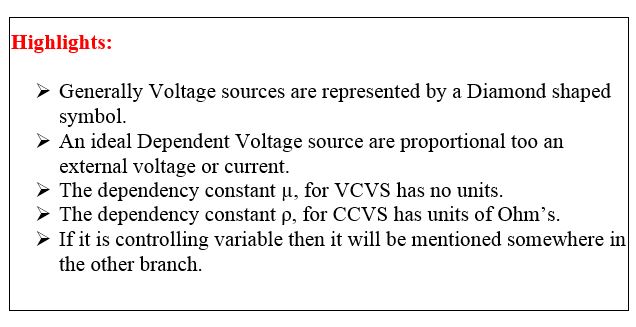
Related Articles:
I appreciate sending me subjects related in electrical power engineering.